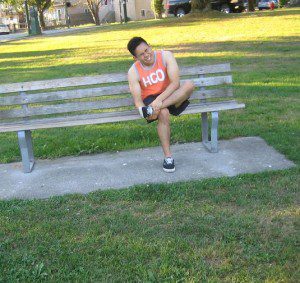Blisters defined as a fluid collection beneath the epidermis, the top layer of the skin, but above the dermis, the layer underneath the epidermis. A blister primarily forms because of friction or when two surfaces rub against each other, wherein one surface is the skin. The pressure and rubbing against the surface of the skin irritates the skin leading to a blister. Blisters are also called bleb or bulla.
There is no need for medical care when it comes to managing blisters as they can be managed at home with proper first aid taught in First Aid Classes. However, when a blister is painful or makes walking difficult, it may be best to seek medical care.
Causes of Blisters
Blisters can be found anywhere in the body but are usually found in the hands and feet because these are the areas that are most prone to pressure and rubbing, which are the primary causes of getting a new blister.
- Wearing uncomfortable or ill-fitting shoes or even a new pair of shoes
- Using a hammer, a shovel or riding a bike
- Holding on to bars for a long period of time
- Lifting heavy weights
- Burns
- Reaction to drugs
- Contact with irritants, such as in cases of contact dermatitis and atopic dermatitis
- Skin diseases, such as chicken pox and impetigo
First Aid Treatment for Blisters
It is not generally recommended to pop blisters are they may result to an infection. The skin over the fluid acts as a protection from bacteria. Therefore, if the blister is not causing much pain, keep it intact.
- If the blister is not too painful, keep it intact. Using an adhesive bandage, cover the blister. If there is an allergic reaction to adhesives, use paper tape instead.
The following steps are how to properly drain a blister in cases of a painful blister, whilst keeping the overlying skin in place:
- The needle to be used must be sterile. To sterilize the needle, it can be wiped with rubbing alcohol or the point may be placed in a flame until red hot.
- Using warm water and soap wash both hands and the blister.
- Wipe the blister with iodine.
- Using the sterilized needle, puncture a few spots the near the edge of the blister. Allow the fluid to drain but keep the overlying skin intact.
- Before covering the blister with a non-stick gauze bandage, apply an ointment to the blister.
- Change the dressing daily. Ointment should be applied every time the dressings are changed.
Prevention of Blisters
Prevention is better than cure. Blisters are easily preventable. The following tips can help prevent blisters from forming:
- Wear properly fitting shoes.
- Use moisture-wicking socks. One may also use double socks.
- Use additional cushioning for toes and insoles.
- When wearing new shoes, break in them slowly. Best to put petroleum jelly or an adhesive bandage on areas that may cause friction.
- Wear gloves or grips when doing activities that may cause some rubbing and pressure in the hands
Blisters are fluid collections underneath the top layer of the skin that are commonly caused by the rubbing of the skin against another surface
Online Sources:
http://www.mayoclinic.org/first-aid/first-aid-blisters/basics/art-20056691

